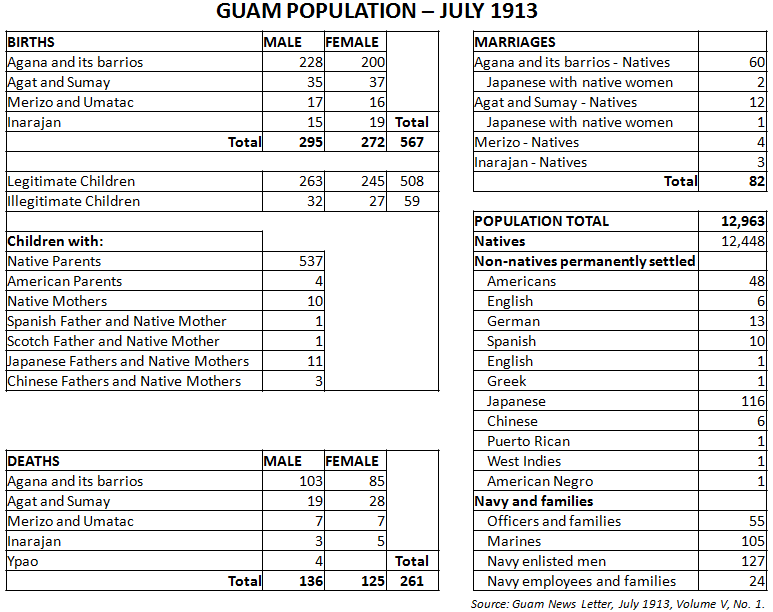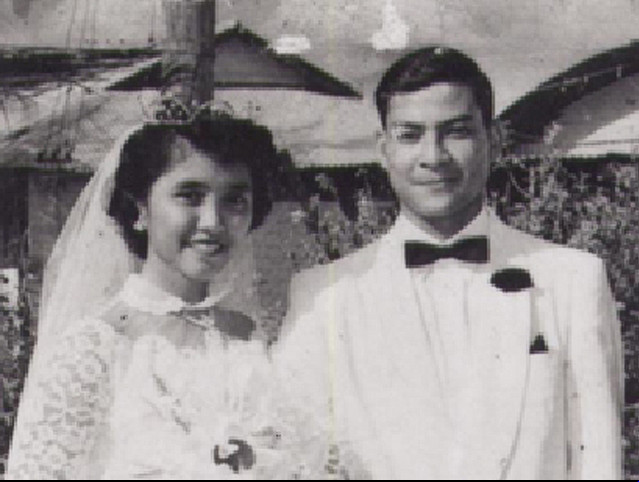Home
Is "Guamanian" an Ethnic Race?
- Details
- Written by: Bernard Punzalan
I meant to write about this issue a while back ago but fell off my radar. However, recently on FaceBook (July 15, 2013), thanks to David Atalig for fielding this very question on his FaceBook status, which pushed me to write more about this very issue. Although David is a Chamorro from Saipan, he and his family reside in California.
At the onset of this writing over 93 people “Liked” his status, while 34 people made a comment. If there’s one thing about FaceBook is that you never know what people will write about until they click that button to make a comment. A day later over 177 “Liked” his status and 65 people commented, both which continue to grow in numbers.
So here’s what David Atalig wrote to fuel comments:
Is "Guamanian" an Ethnic Race?
When I filled out my children's school application, it asked for my "Race". Among the choices was "Guamanian," "Hawaiian," and "Other Pacific Islander." Of course, since I am not from the island of GUAM, I marked "Other Pacific Islander." School administrator said they are only following what the US Census identifies as "Race". Really?? Shouldn't it be "Chamorro"???? This needs to be fixed!!
Although, some of us know that the term “Guamanian” is not a race, many others are not aware of it. In fact the response that David received from a California school representative was that their information of the term “Guamanian” as a race was derived from the Census.
Problematic Aggregation
 Perhaps, the most common problem is when organizations (public and private) devise forms and ask about a person’s race. It is not surprising that there is very little knowledge about the Chamorro people being a distinct group of people and race. For the most part, it seems, we have become encapsulated, perhaps even marginalized, into aggregate categories created for the convenience of others. Once a notion is made it triggers a domino effect of replicating errors regarding the Chamorro identity.
Perhaps, the most common problem is when organizations (public and private) devise forms and ask about a person’s race. It is not surprising that there is very little knowledge about the Chamorro people being a distinct group of people and race. For the most part, it seems, we have become encapsulated, perhaps even marginalized, into aggregate categories created for the convenience of others. Once a notion is made it triggers a domino effect of replicating errors regarding the Chamorro identity.
The U.S. Government has come a long way with regards to issues on its Territories (CNMI included), race, and minorities. Yet, we know that still much more can be improved upon and corrected. The public relies on the Government to lead the nation and know its “stuff.” Generally, once the government has “inked” it, many will rely on it as “gospel.” Such is the misnomer of the term “Guamanian,” which David and many others have faced.
In fact try visiting/searching some State government websites and see how they much they are consistent with the "Guamanian or Chamorro" race data. This all stems from the Census classifications and data. You will see first hand on how much these organizations attempt to be consistent with national data reporting and further causing more misinformation.
Reactions
Some of the comments were interesting to review. Some touched on the subject while others digressed into other areas such as Territory versus Commonwealth, a few attempted to define/qualify the two categories, and one even mentioned an issue with AT&T.
So I decided to “Share” David’s status to see if I could provoke more comments and perceptions, to see how others may feel about the question. CHE'LU Inc. also shared and received some comments on FaceBook too.
I also picked up from some of the commentators the impact of less or even restrictive race options for those with multiethnic ancestries, which included Chamorro. The restrictions create a form of identity confusion and challenges with navigating the concocted classifications that simply do not seem to fit one's true identity.
Yeah, I reacted too SMH…with some sarcasm, “Big issue with the Census over the years, the military, and other local, state and federal agencies. The problem is that those who do not know try to educate us as to who we are. Ai adei. Whenever there is no Chamorro category, please write it in!”
Nomenclatures
Throughout history, there are several nomenclatures that were used to identify the Chamorro people. Within our own people we refer to ourselves (those with indigenous ancestry in any of the Mariana Islands) as one or more of the following: Taotao tano; Taotao håya; or Chamorro.
During the Spanish occupation Chamorro people were recorded as: Ladrones, Indios/Indians, Marianos, natives, and Chamorro. The partition of the Mariana Islands after the Spanish-American War added more categories to the mix and complications.
When the U.S. and Japan occupied the islands, Chamorro people became further defined by their island of residence: Guamanian, Saipanese, Rotanese. As of the time of this writing I am not sure if the Chamorro people of Tinian had some designated term.
One of the earliest forms of use for the “Guamanian” nomenclature can be traced to the 1919 when the Guam Hymn, “Stand Ye Guamanians,” was written and composed by Dr. Ramon Manalisay Sablan.
During the late 1970’s, there is a contention that the term “Guamanian,” took on more traction with the notion that it was no longer exclusive to the Chamorro people of Guam. Rather, it started to become inclusive of non-Chamorro residents who where long time residents of Guam. Although, that notion may remain contentious with some, it does seem more apparent and acceptable today that the “Guamanian” nomenclature encompasses legal residents of Guam regardless of race or ethnicity. Several FaceBook commentators agreed that “Guamanian” was a term to refer to one’s nationality, per se.
I also found it interesting to note that several people commented that if Guamanian was an option and not Chamorro, they would end up selecting Pacific Islander status: a category that commonly tends to erroneously develop into a misinterpreted race of people. If I’m not mistaken Congress created this category of people (Pacific Islanders), which consisted of many races within the Pacific Islands, in order for such people to benefit from Federal program offerings.
Micronesian? Indeed, some forget or not aware that the Mariana Islands are geographically situated in Micronesia, with Guam being the largest island.
I’m sure there are probably other forms of nomenclature that may have surfaced at one time or another to try and categorize a Chamorro, but these are the most common ones that came to mind.
Decision Making Purposes
The Census Bureau’s website lists quite a number of reasons why such data is important to collect and maintain. However, within the U.S. Constitution, Article I, mandates a decennial census.
Perhaps the most applicable reason across general purposes is that the data will be analyzed and used for decision making purposes. Therefore, depending on the nature of what type of decision needs to be made, will be contingent and dependent on the data collected to date. If one does not have the appropriate data, s/he might not be able to make a more suitable decision that can impact the lives of many. In particular a faulty decision could result in an adverse impact/unintended consequence of loss of benefits, programmatic or funding opportunities, and the list can go on.
 There were many comments to request Congressional representatives to try and fix the situation. But from my view it’s going to require everyone’s effort to educate people and organizations as to who we are as a Chamorro people. Please take the time and effort to educate others so that better decisions that may impact our people are made. As I mentioned earlier, if the "Chamorro" option is not there, please write it in.
There were many comments to request Congressional representatives to try and fix the situation. But from my view it’s going to require everyone’s effort to educate people and organizations as to who we are as a Chamorro people. Please take the time and effort to educate others so that better decisions that may impact our people are made. As I mentioned earlier, if the "Chamorro" option is not there, please write it in.
I realize in some cases, sometimes a survey or form that is developed along the lines of today's federal policies may restrict the option to Pacific Islander. However, I believe we need to push back some and at least let them know that perhaps we do meet the federal definition of Pacific Islander, but we must further qualify that we are Chamorro people within that classification. From an analytical and policy standpoint such clarification would help further the government's understanding of issues that may be unique among different Pacific Islanders, instead of making general assumptions about all Pacific Islanders that could potentially marginalize a particular ethinic group of people.
Don't get tired of explaining it; be proud to tell them you are Chamorro and which island you come from! You might just also be helping future fellow Chamorro people from having to experience the same frustration.
A History of Census[tive] Race Questions
Although Guam was ceded to the U.S. in 1898, Guam was not included in the U.S. census until 1920. The CNMI was included in the 1950 Census, after World War II.
To reiterate, the government tends to drive and create classifications of people, and once it has been documented, many uninformed people may blindly follow and cause faulty decisions.
Throughout the decennial Census events, the questionnaires were not consistent for the Chamorro people and other ethnic groups. To get an idea of some of the inconsistencies, I have extracted verbatim instructions to the Enumerators and images with regards to recording “race,” for each Census beginning with 1920.[1]
1920 Census

120. Column 10. Color or race[2].-Write "w" for white; "B" for black; "Mu" for mulatto; "In" for Indian; "Ch" for Chinese; "Jp" for Japanese; "Fil" for Filipino; "Hin" for Hindu; "Kor" for Korean. For all persons not falling within one of these classes, write" Ot" (for other), and write on the left-hand margin of the schedule the race of the person so indicated.
121. For census purposes the term "black" (B j includes all) Negroes of full blood, while the term "mulatto" (Mu) includes all Negroes having some proportion of white blood.
Instructions:
150. Column 12. Color or race.-Write "W" for white, "B" for black; "Mus" for mulatto; "In" for Indian; "Ch" for Chinese; "Jp" for Japanese; "Fil" for Filipino; "Hin" for Hindu; "Kor" for Korean. For a person of any other race, write the race in full.
151. Negroes.-A person of mixed white and Negro blood should be returned as a Negro, no matter how small the percentage of Negro blood. Both black and mulatto persons are to be returned as Negroes, without distinction. A person of mixed Indian and Negro blood should be returned a Negro, unless the Indian blood predominates and the status as an Indian is generally accepted in the community.
152. Indians.-A person of mixed white and Indian blood should be returned as Indian, except where the percentage of Indian blood is very small, or where he is regarded as a white person by those in the community where he lives. (Se par. 151 for mixed Indian and Negro.)
153. For a person reported as Indian in column 12, report is to be made in column 19 as to whether "full blood" or "mixed blood," and in column 20 the name of the tribe is to be reported. For Indians, columns 19 and 20 are thus to be used to indicate the degree of Indian blood and the tribe, instead of the birthplace of father and mother.
154. Mexicans.-Practically all Mexican laborers are of a racial mixture difficult to classify, though usually well recognized in the localities where they are found. In order to obtain separate figures for this racial group, it has been decided that all person born in Mexico, or having parents born in Mexico, who are not definitely white, Negro, Indian, Chinese, or Japanese, should be returned as Mexican ("Mex").
155. Other mixed races.-Any mixture of white and nonwhite should be reported according to the nonwhite parent. Mixtures of colored races should be reported according to the race of the father[4], except Negro-Indian (see par. 151).
Instructions:
45. Column 10. Color or race.-For symbols to be entered in this column, see the note at the bottom of the schedule. Any mixtures of white and nonwhite blood should be recorded according to the race of the nonwhite parent. A person of mixed Negro and Indian blood should be reported as Negro unless the Indian blood greatly predominates and he is universally accepted in the community as an Indian. Other mixtures of nonwhite parentage should be reported according to the race of the father. Mexicans are to be returned as white, unless definitely of Indian or other nonwhite race.
For the first time the Census form contained a choice of race; however, the Enumerator still had the ability to choose the race for the household.
Instructions:
Item 9. Race
114. Item 9. Determining and entering race.-Write "W" for white; "Neg" for Negro; "Ind" for American Indian; "Chi" for Chinese; "Jap" for Japanese; "Fil" for Filipino. For a person of any other race, write the race in full. Assume that the race of related persons living in the household is the same as the race of your respondent, unless you learn otherwise. For unrelated persons (employees, hired hands, lodgers, etc.) you must ask the race, because knowledge of the housewife's race (for example) tells nothing f the maid's race.
115. Mexicans.-Report "white" (W) for Mexicans unless they are definitely of Indian or other nonwhite race.
116. Negroes.-Report "Negro" (Neg) for Negroes and for persons of mixed white and Negro parentage. A person of mixed Indian and Negro blood should be returned as a Negro, unless the Indian blood very definitely predominates and he is accepted in the community as an Indian. (Note, however, the exceptions described in par. l18 below.)
117. American Indians.-Report "American Indian" (Ind) for persons of mixed white and Indian blood if enrolled on an Indian Agency or Reservation roll; if not so enrolled, they should still be reported as Indian if the proportion of Indian blood is one-fourth or more, or if they are regarded as Indians in the community where they live. (See par. 116 for persons of mixed Indian and Negro blood and also exceptions noted in par. 118.) In those counties where there are many Indians living outside of reservations, special care should be taken to obtain accurate answers to item 9.
118. Special communities.-Report persons of mixed white, Negro, and Indian ancestry living in certain communities in the Eastern United States in terms of the name by which they are locally known.
The communities in question are of long standing and are locally recognized by special names, such as '"Croatian," "Jackson White," "We-sort," etc. Persons of mixed Indian and Negro ancestry and mulattoes not living in such communities should be returned as "Negro" (see par. 116). When in doubt, describe the situation in a footnote.
119. Mixed parentage.-Report race of nonwhite parent for persons of mixed white and nonwhite races. Mixtures of nonwhite races should be reported according to the race of the father. (Note, however, exceptions detailed in pars. 116 and 118 above.)
120. India.-Persons originating in India should be reported as "Asiatic Indians.”
1960 Census

No instructions were available. [7]
1970 Census
Beginnin with the 1970 Census, the forms became self-enumerated, giving more autonomy for households to declare their race. The term "Black" also appears for the first time.
1980 Census

In 1980 it was the first time “Guamanian” was included as an option and yet, Chamorro was not an option. Also, the “race” item was not label like previous Census events.
1990 Census
In 1990, the “Race” label reappears; however, “Color” has been omitted. Note the introduction of the “Asian or Pacific Islander (API)” subheading, which “Guamanian” is included, but still does not offer “Chamorro,” unless one writes it in.
2000 Census
In 2000, the Asian or Pacific Islander (API) is dropped and now has separate categories. For the first time the “Chamorro” race is included but with the option of “Guamanian or Chamorro.” In this Census the respondents were allowed to pick more than one race for the first time. Also, “Other” became “Some other race” with its own write-in line.
2010 Census
And finally in the 2010 Census , the race categories remained generally the same as in 2000 and no change to the “Guamanian or Chamorro” option.
Bibliography
Census Bureau website accessed July 16, 2013 from: http://www.census.gov
Census Bureau. 1989. 200 Years of U.S. Census Taking: Population and Housing Questions, 1790-1990. Government Printing Office: Washington DC.
Central Bureau of Statistics. Population Census | Uses of Census Data. Accessed July 16, 2013 from: http://www.cbs.gov.il/census/census/pnimi_sub_page_e.html?id_topic=1&;id_subtopic=5
D’Vera Cohn. 2010. Race and the Census: The “Negro” Controversy. PewResearch Social & Demographic Trends.
Gina E. Taitano, ' Adoption of “Guamanian”', referenced July 15, 2013, © 2009 Guampedia™, URL: http://guampedia.com/adoption-of-guamanian/.
[1] The Census from 1920 through 1960 were controlled by Census enumerators. Enumerators basically completed the form and had the ability to select a person’s race. From 1970 to 1990, households filled out their own forms and checked off their appropriate race category. In 2000 and 2010, households could choose more than one race.
[3] Reconstructed image from: Bernard Punzalan. (publication pending). 1930 Population Census of Guam: Transcribed, Chamorro Roots Genealogy Project: Spanaway, Washington.
[4] This was applied to Guam as well. If the mother was Chamorro and the father was not, the father’s race was used for their children.
[5] Reconstructed image from: Bernard Punzalan. (publication pending). 1940 Population Census of Guam: Transcribed, Chamorro Roots Genealogy Project: Spanaway, Washington.
Database Update 13 Jul 2013
- Details
- Written by: Bernard Punzalan
The database has been updated and has grown from 297,144 to 298,406 names.
Guam's Population: July 1913
- Details
- Written by: Bernard Punzalan
Today's population on Guam is more than 10 times the size it was 100 years ago...
Famalao’an Chamorro: Shadows in Early Chamorro History
- Details
- Written by: Bernard Punzalan
As the Principal Investigator of the Chamorro Roots Genealogy Project™ it is frustrating to review early Chamorro history. In most literature, there are barely any Chamorro names listed. Perhaps, one may find a paragraph or two, but then that’s it! Other Chamorro historians have written about this shortfall and dilemma in history, but I think it’s important to constantly remind ourselves of this deficiency so that we can ensure that when we write about our history today, we do not overlook it ever again.
 More so frustrating is the rarity of identifying Chamorro women in early history and transcripts. When I talk about early Chamorro history, I am referring to the period from the point of Magellan’s 1521 arrival in the Mariana Islands through the mid-1700’s and perhaps into the 1800's.
More so frustrating is the rarity of identifying Chamorro women in early history and transcripts. When I talk about early Chamorro history, I am referring to the period from the point of Magellan’s 1521 arrival in the Mariana Islands through the mid-1700’s and perhaps into the 1800's.
This period also was the recorded time point of outside contact, conquest, conversion and colonialism of the Mariana Islands. In addition, it is the impetus for the Chamorro culture transitioning from a matrilineal to patrilineal society.
This is where, at least it seems to me, Chamorro women become shadows in Chamorro history. In other words, they existed, had a role, but were barely identified in historical recordings. So here are a couple of examples of two Chamorro women who are depicted as shadows in early Chamorro history.
Sosanbra, Sunama’s wife. One of the first recordings of a Chamorro was by Fray Juan Pobre. Pobre recorded and described Sunama, his wife Sosanbra, their eldest son Maripego and two daughters : Marifoquez and Mominasaria. This was one of the first recordings of Chamorro names, family, and women. After this recording, women’s names are barely disclosed.
Captain Masongsong’s mother-in-law. Masongsong was a Filipino soldier among the Spanish Army contingents. His mother-in-law is depicted in history as a very brave Chamorro woman. She was a woman that attempted to rally the Filipino soldiers against the Spaniards and take over. Instead, Masongsong did not entertain her and turned her in to the Spanish authorities. Who was this brave Chamorro woman that defied Spanish authorities? Who was Masongsong’s wife?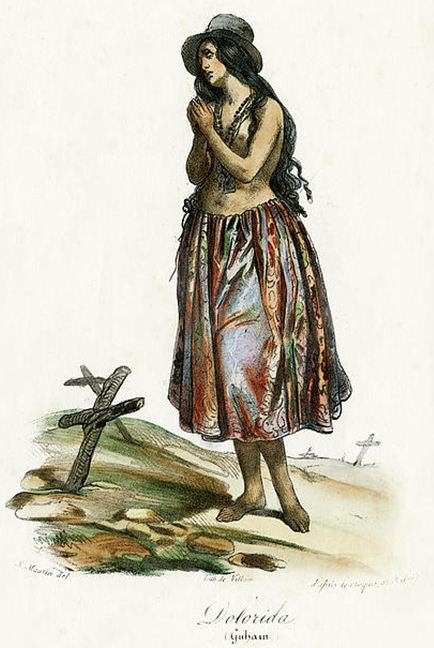
Of recent, I have been able to at least identify one of Masongsong’s sister-in-laws: Maria Taytifi. It feels so strange right now to be able to name Maria Taytifi, yet unable to identify her sister, Masongsong’s wife and her mother, Masongsong's mother-in-law. On the other hand, it feels like a huge step forward for me to at least identify one of the family members of Chamorro descent.
Our Chamorro women should not be or remain in the shadows of Chamorro history. We must continue to dig deep in early history, identify them and shed light upon their identity and stories. After all, Chamorro women had a key role in the perpetuation of our identity, language, culture and retention as a distinct group of people despite interracial marriages.
Magahet, biba i famalao'an Chamorro!
Rosita Leon Guerrero Cruz Punzalan
- Details
- Written by: Bernard Punzalan
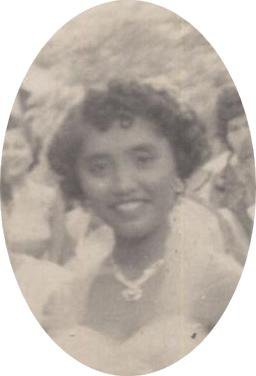 Today, which means forever because it will depend on what day you read this, I honor my mother Rosita Leon Guerrero Cruz Punzalan. Her parents are the late Ignacio Manibusan Cruz (Manggåfan Mafongfung yan Jai) and Rosa Salas Leon Guerrero (Manggåfan Matias yan Teyu).
Today, which means forever because it will depend on what day you read this, I honor my mother Rosita Leon Guerrero Cruz Punzalan. Her parents are the late Ignacio Manibusan Cruz (Manggåfan Mafongfung yan Jai) and Rosa Salas Leon Guerrero (Manggåfan Matias yan Teyu).
Mom comes from a family of what was supposed to have been 19 siblings. Unfortunately, nine of her siblings were lost prior to birth and in the mid-to-late 1920s Mom had lost two more sisters as children due to several epidemics that swept through Guam.
Part of Mom’s childhood included the traumatic experiences of World War II, the re-building of Guam after the war, and the influence of Americanization. Her family originally hailed from Palai, Piti, then moved to Hagatna, and after the war to Tamuning.
When Mom was single, she worked for a short period at the original Town House store. Not too long after Mom dated my father, the late Eustaquio Anderson Punzalan (Manggåfan Che’ yan Pansi), they were married. Dad was already in the Air Force and stationed on Guam waiting for the Air Force to figure what they were going to do with all the Chamorro men who underwent basic training on Guam; but, that’s another interesting story on its own.
While on Guam, Mom and Dad had their first three children on Guam: Irene, David and Rosemarie. Once Dad had orders for his assignment to Laramie Air Force Base, Wyoming, Mom would have to travel with her three children and without being accompanied by Dad. Given the time period of world events in 1960, I can hardly imagine the stress Mom went through and how she was able to harness her courage and strength to get through all that and then resettle into an environment foreign to her.
After all, Mom is an island girl that never left her home prior to marrying Dad. Security clearance requirements to come in and out of Guam were still in effect and there were “overseas” vaccination requirements. Her English was not quite stellar so she placed a lot of faith and trust in people to help her navigate requirements. I’m sure there were tons of other bureaucratic hurdles Mom needed to overcome, but she weathered through them all! 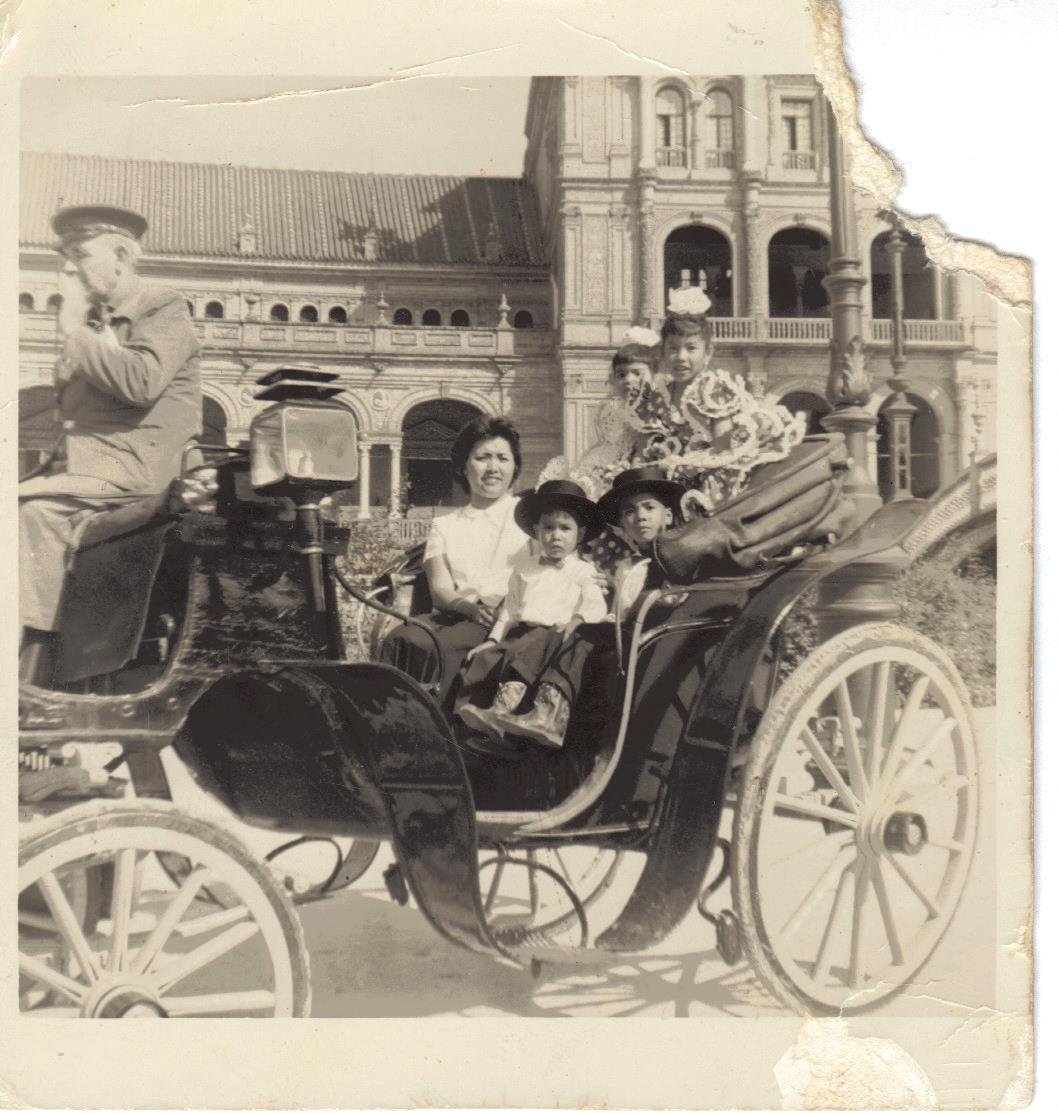
After the move to Wyoming, I was born. Then, my brother Tom was born in Spain, Charlie was born in Okinawa, and Paul was born in California. That would make seven of us children that Mom had to ensure that we were “properly credentialed and travel ready for the military,” for Dad's next assignment. Seven children to take care of when Dad was on temporary duty (TDY) away from the family; seven children to take care of when Dad was deployed twice to Vietnam; and, seven children to move from one military assignment to another. We were all over the globe!
My youngest sibling, Noreen, did not come until much later and after Dad retired from the Air Force. But all-in-all, Mom had to tend to her eight competing interests needing her love and care.
Mom acknowledges that she wasn’t a perfect mother. But hey, there’s not one human being that I am aware of that was born and readily armed with any parental experience. Mom followed her instincts and learned from it, just like we all seem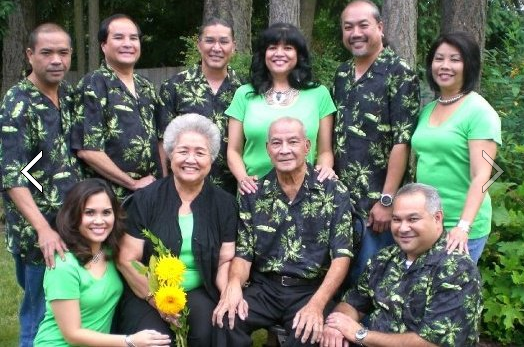
As I reflect back in time I am in awe with what my mother had been put through and the things she sacrificed for us children. When we reminisce about the past together, I can see it in her eyes that she is very proud of us. She sheds many tears of joy, pain and love for us. I for one as a child gave her plenty of worries with my illnesses and accidents that landed me in the hospital on more than one occasion.
My mother is definitely a Super-Ordinary Woman, my Guardian Angel, and my Hero! I am so blessed to be alive to share this story with you!
Page 63 of 82









